Reminder Before Due Date – Scheduled Flow
Automatically send an email reminder to the member.
Step1:
1: Create a Scheduled Flow
• Go to Setup → Search for Flows → Click New Flow.
• Select Scheduled-Triggered Flow and click Create.
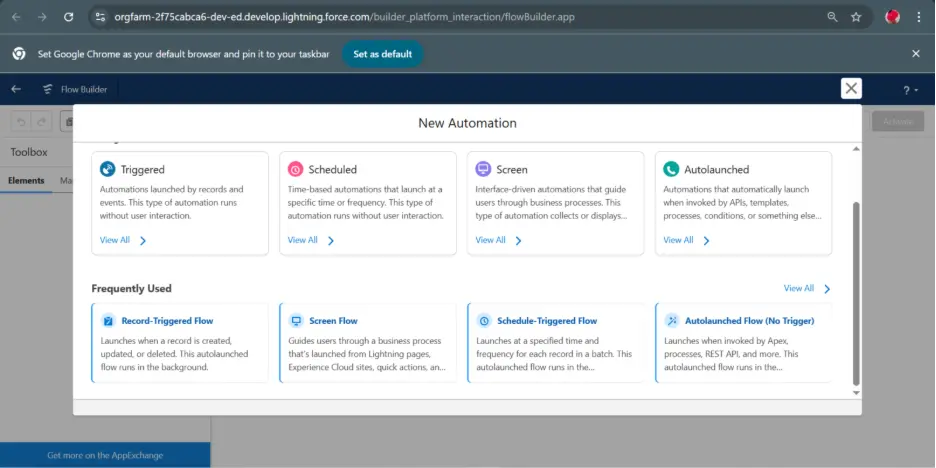
Step 2. Set Schedule
• Set it to run daily at 8:00 AM.
• Choose the object: Issue__c.
• Condition à Returned? = false;
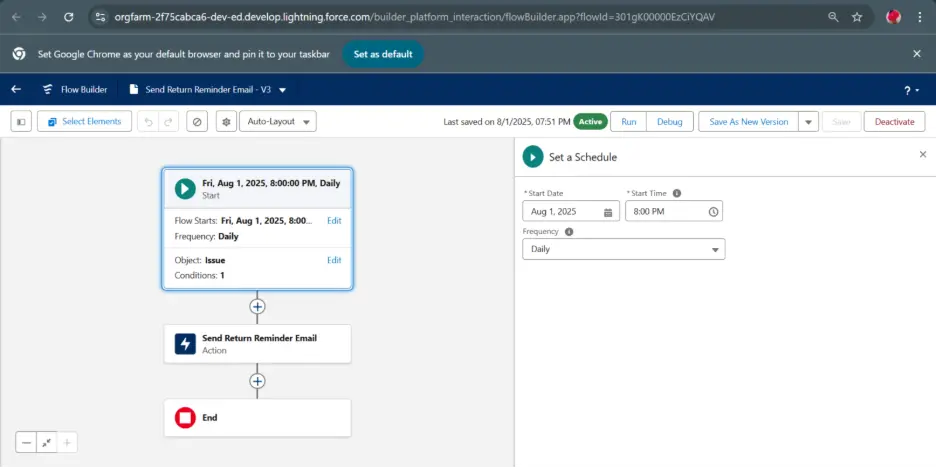
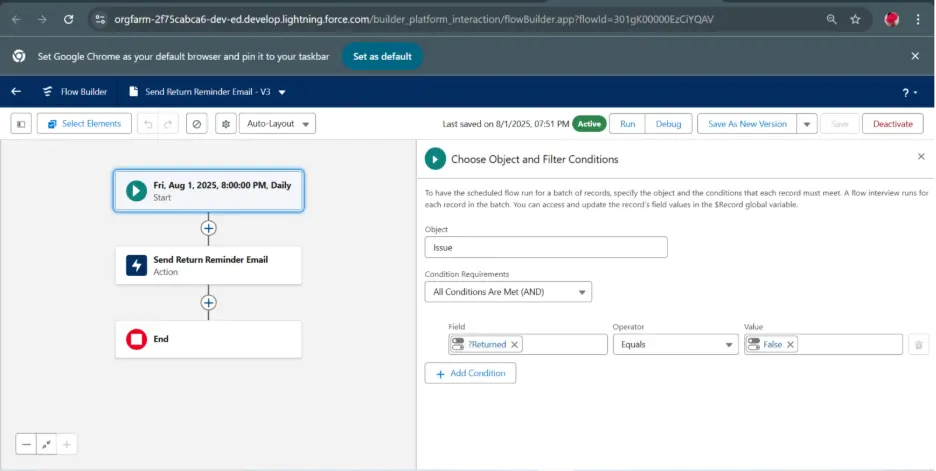
Step 4: Add Action – Send Email
• Click + and choose Action → Select Send Email.
• Label: Send Return Reminder Email
• Set:
• Recipient Email Address: Issue__c → Member__r.Email__c
• Subject: Book Return Reminder
• Body:
Dear {!$Record.Contact__r.FirstName},
This is a reminder to return the book “{!$Record.book__r.Name}” by {!$Record.Return_Due_Date__c}.
Thank you,
Library Admin.
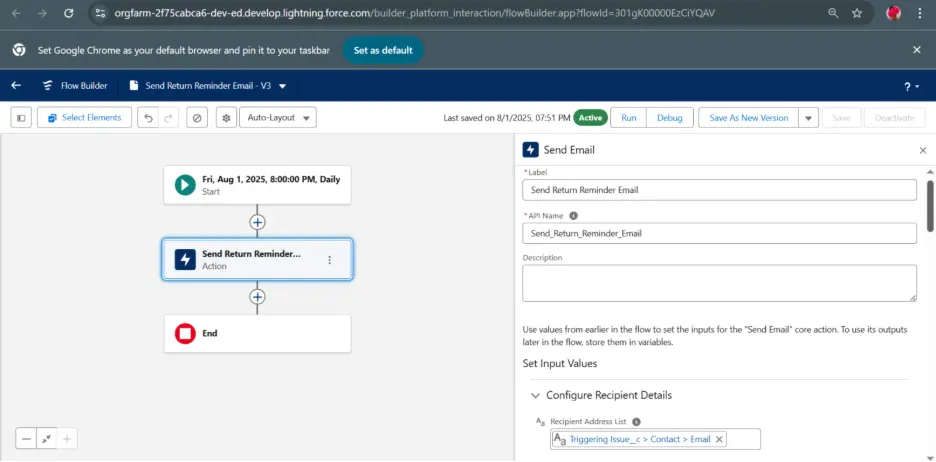
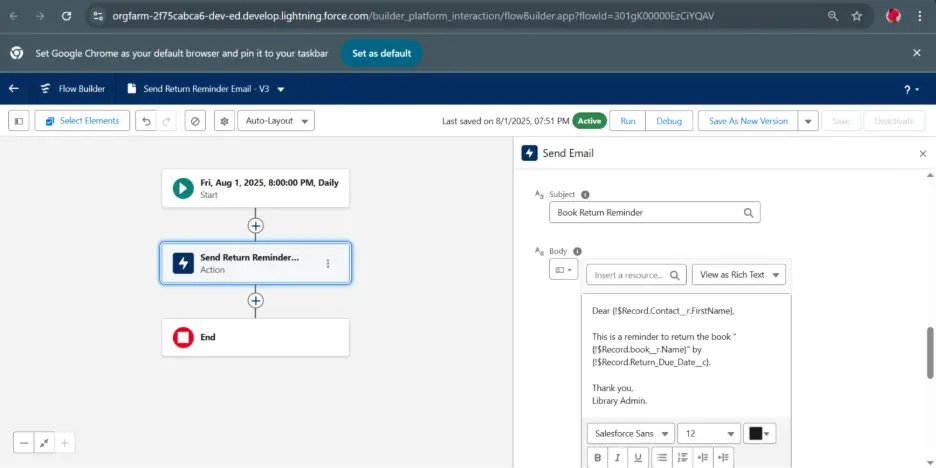
6. Save and Activate Flow
• Click Save, give flow a name
• Then click Activate
Every day at 8 AM, Salesforce checks for books due.
If the book is not yet returned, the system automatically emails the member.
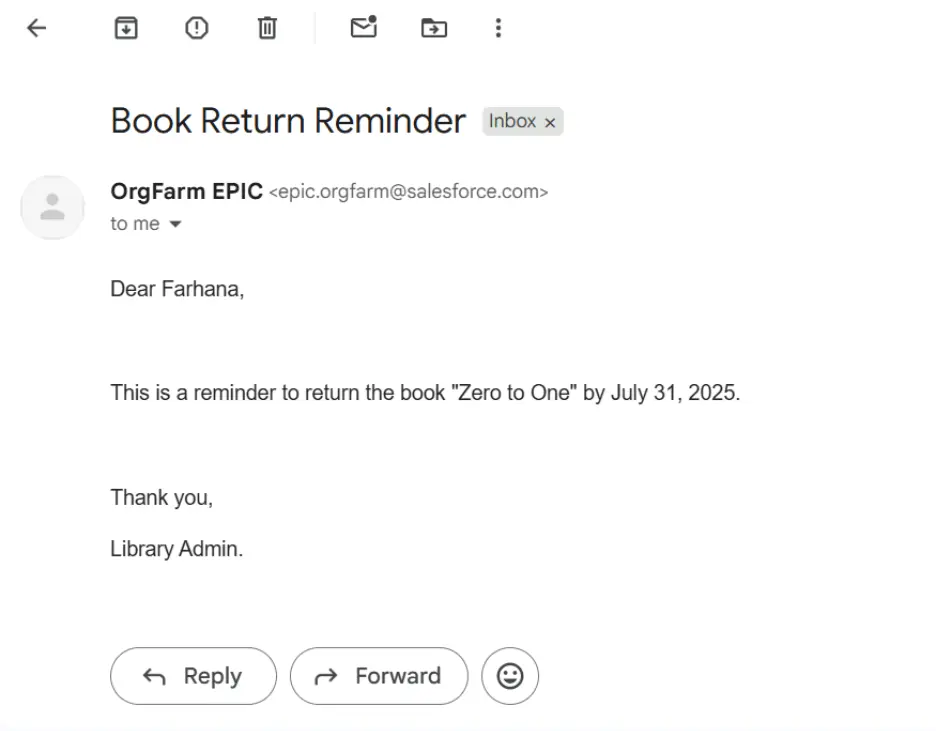
Video
Auto Fine Creation When Return is Late – Flow Purpose
To automatically generate a fine when a book is returned after the due date, using Salesforce automation.
Shape
Step 1: Create a New Flow
• Go to Setup → Search Flows → Click New Flow.
• Select Record-Triggered Flow → Click Create.
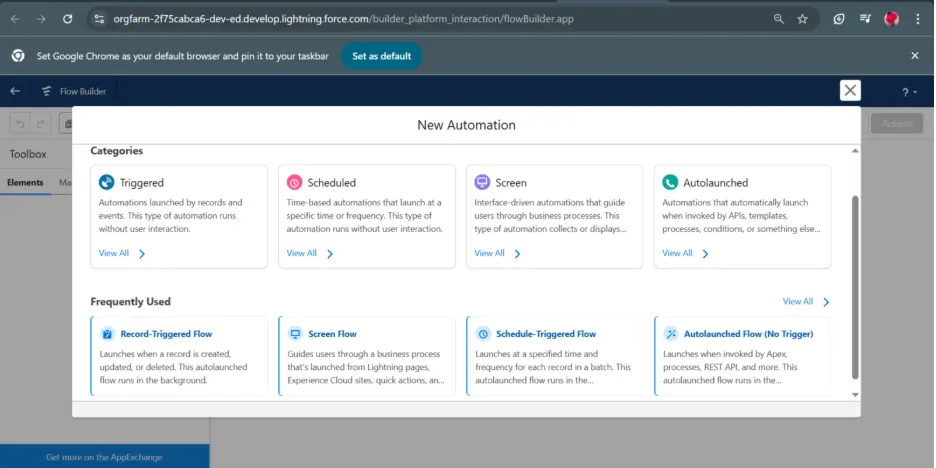
Step 2: Configure Trigger
• Object: Issue__c
• Trigger: When a record is updated
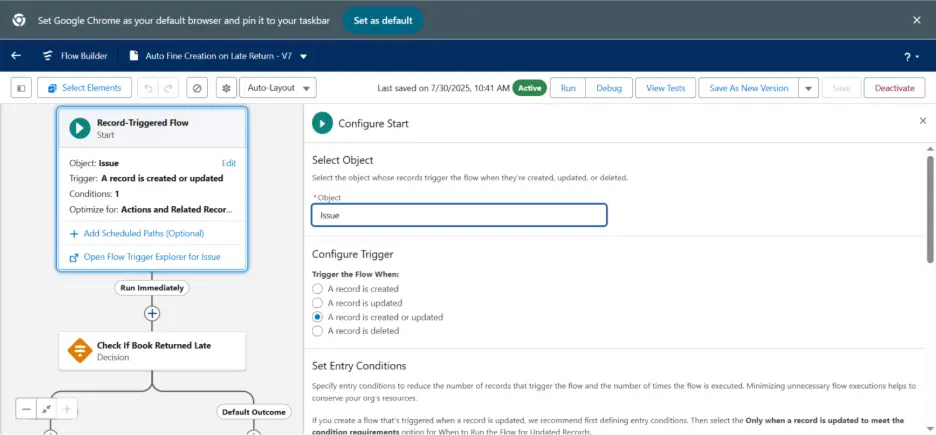
Entry Conditions
| Field | Operator | Value |
|---|---|---|
| Returned__c | Equals | False |
• Check ✅ Only when a record is updated to meet the condition requirements.
Shape
Step 3: Add Action – Decision
• Label is as: Check If Book Returned Late.
• Add outcome details like this:
• Label = Late Return:
• Condition Requirements to Execute Outcome: All Condition are Met (AND)
• Condition: Return_date < Return_due_date
• When to Execute Outcome: Only if the record that triggered the flow to run is updated to meet the condition requirements.
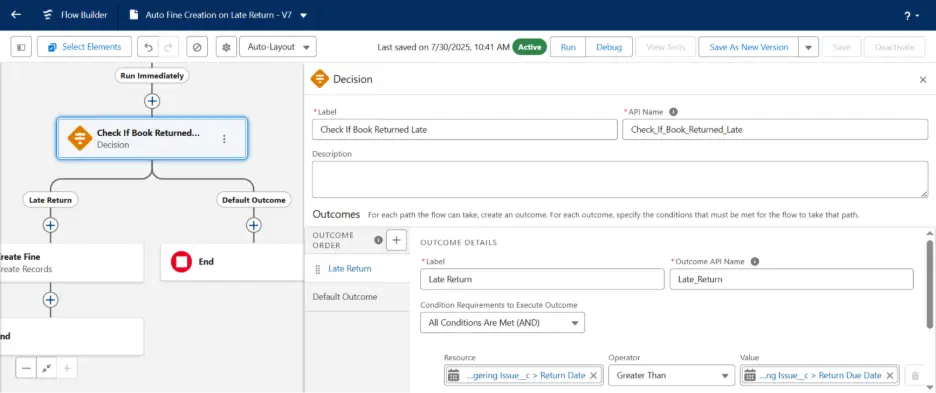
• Click + → Choose Create Records
• Label: Create Fine
• Create a Record of This Object: Fine__c
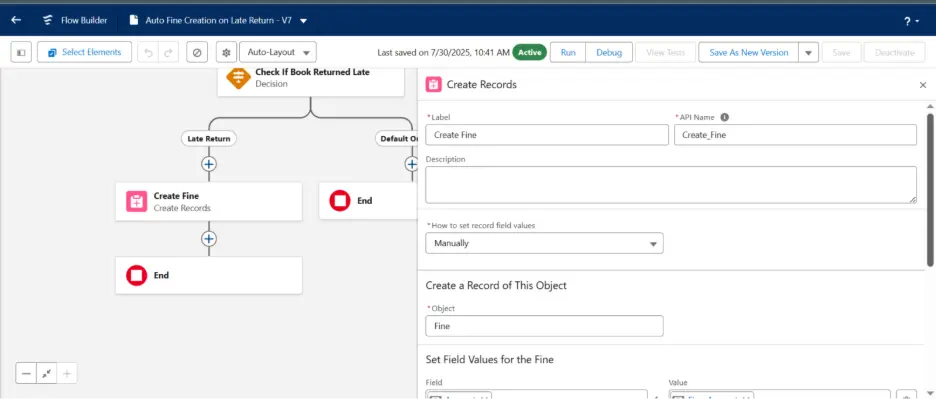
Set Field Values for Fine__c:
| Fine__c Field | Value |
|---|---|
| Issue__c | {!$Record.Id} |
| Issued_date | TodayDate |
| Amount__c | Formula (e.g., 10* (Return_Date__c – Due_Date__c)) |
| Paid__c | False |
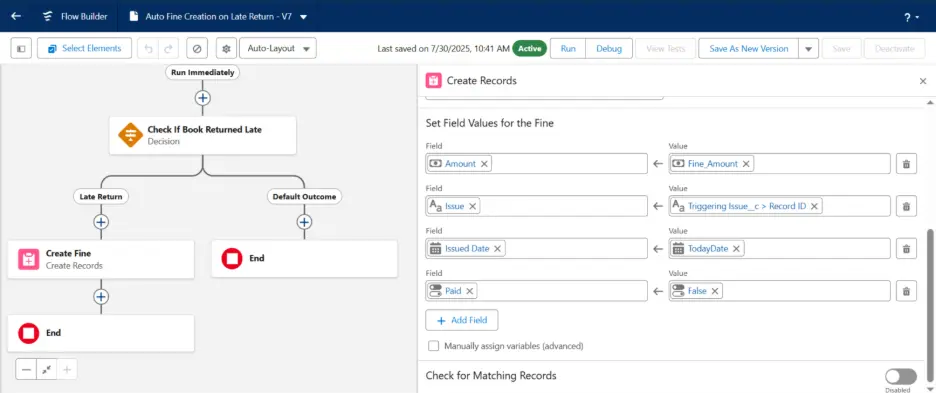
Note: Use a formula resource for Amount__c calculation:
• Click New Resource → Formula
• Name: Fine Amount
• Data Type: Number
• Formula:
( $Record.Return_Date__c – $Record.Due_Date__c ) * 10
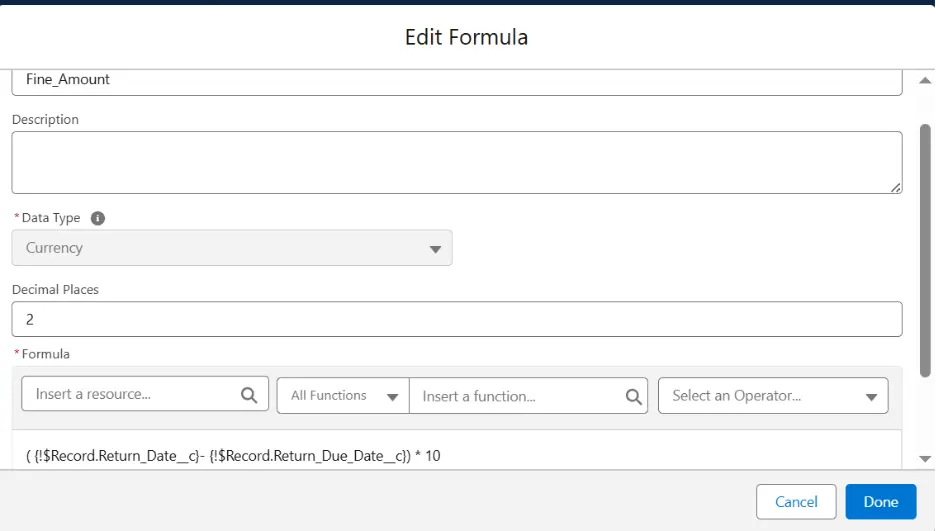
Note: Use a formula resource for Issued date:
• Click New Resource → Formula
• Name: Today Date
• Data Type: Date
• Formula: TODAY()
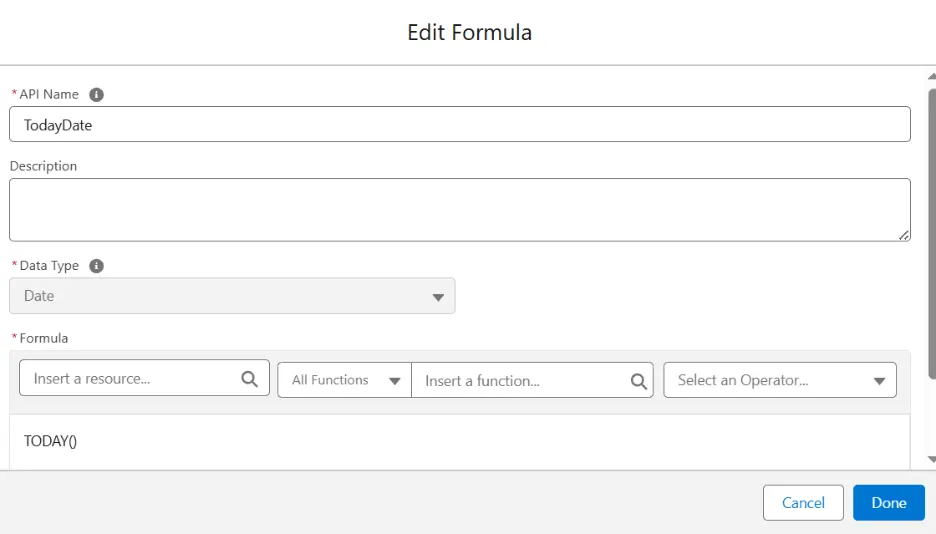
Step 4: Save and Activate
• Click Save → Name: Auto Fine Generation Flow
• Click Activate
Shape
Result:
• When a librarian update Returned__c = True, and the Return_Date__c > Due_Date__c,
Salesforce automatically:
• Creates a new Fine__c record
• Calculates the fine amount based on late days
• Links it to the correct Issue__c and Member__c
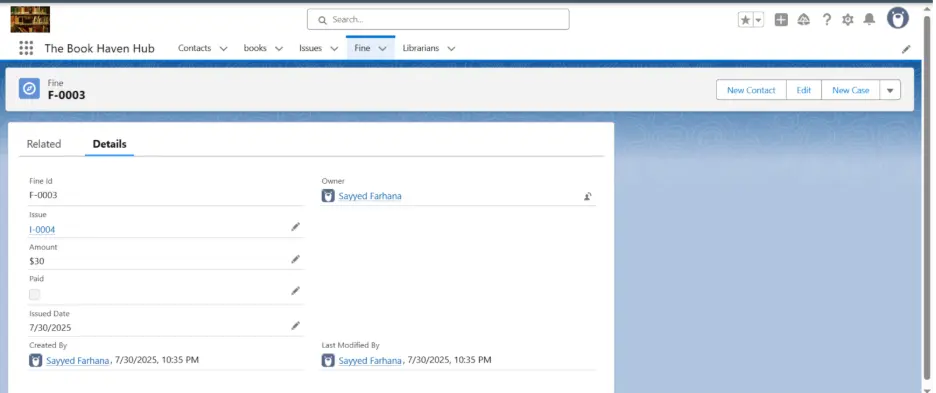
Video
Report And Dashboard
Report1: Books Issued Per Member
Purpose: Shows how many books each member has issued.
Steps:
• Go to Reports → Click New Report
• Select report type: Issues with Members (create custom report type if needed)
• Add Group Rows: Member__r.Name
• Add Columns: Issue Date, Book__r.Name, Status
• Add filter: Returned__c = False (to show currently issued books)
• Click Run → Save & Name the Report
Report2: Fines Collected
Purpose: Track total fines collected and unpaid fines.
Steps:
• New Report → Type: Fine__c
• Filters:
• CreatedDate = THIS MONTH (optional)
• Group Rows: Paid__c
• Add Column: Amount__c
• Add Summary → SUM on Amount__c
• Save as Fine Summary Report
Report3: Books Availability Status
Purpose: Show how many books are available or issued.
Steps:
• New Report → Type: Book__c
• Group Rows by: Availability__c
• Add Column: Name, Genre, Language
• Add row count summary
• Save as Book Availability Report
Report4: Issues Handled by Librarian
Purpose: See how many issues are processed by each librarian.
Steps:
• New Report → Custom Type: Issue__c with Librarian__c
• Group by: Librarian__r.Name
• Columns: Book__r.Name, Issue_Date__c, Returned__c
• Save as Librarian Activity Report.
DASHBOARD
Steps to Create Dashboard
• Go to Dashboards → Click New Dashboard
• Name: Library Management Dashboard
• Folder: Public or Custom
• Click Create
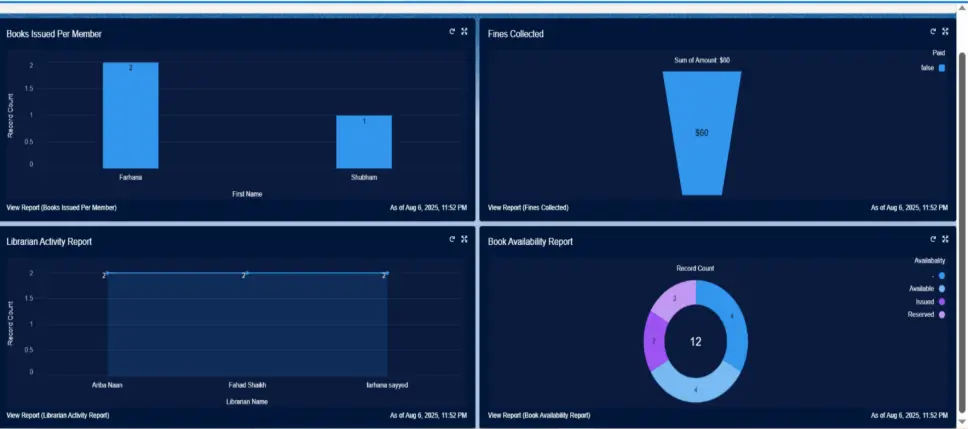
With these reports and dashboards, librarians and admins can:
• Track book movement
• Collect fines efficiently
• Evaluate librarian performance




